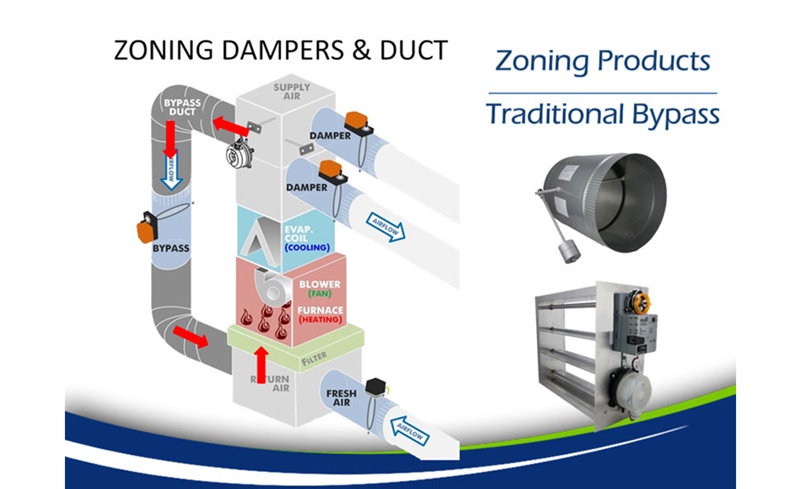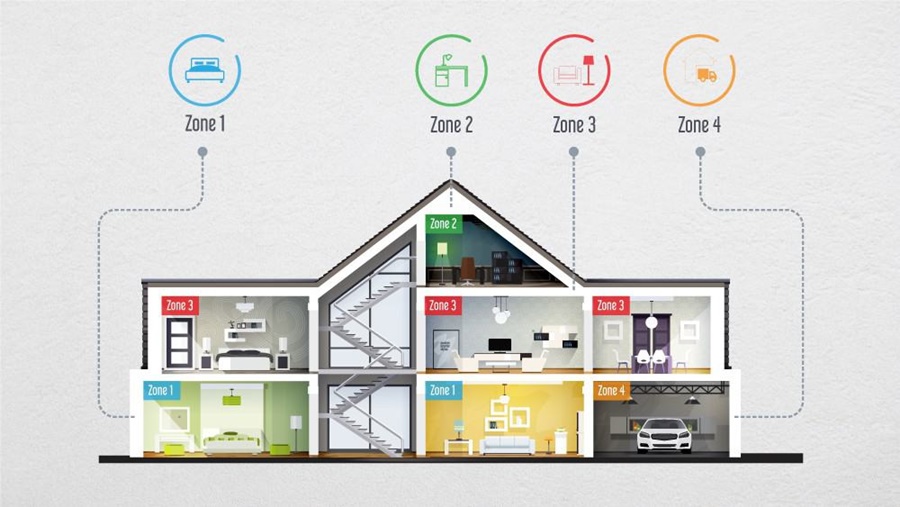When it comes to maintaining a comfortable environment in your home or business, investing in the right HVAC system is crucial. For those who are looking to manage multiple zones with separate temperatures, a 2-zone HVAC system is an ideal solution. This type of system allows you to control the heating and cooling of two distinct areas independently, offering increased comfort and energy efficiency. However, understanding the costs associated with installing a 2-zone HVAC system is essential for making an informed decision. In this article, we will break down the factors that influence the cost of installing a 2-zone HVAC system, give you a comprehensive overview of pricing, and help you determine if this system is a good investment for your home or business.

What is a 2-Zone HVAC System?
A 2-zone HVAC system is a type of heating, ventilation, and air conditioning system that allows you to control the temperature of two separate zones within your property. This means that you can adjust the temperature in one part of the building without affecting the other. The system typically consists of a central unit that distributes conditioned air through ductwork, with dampers that can open or close to control airflow to each zone.
For example, if you have a large house with an upstairs and downstairs, you can use a 2-zone HVAC system to set different temperatures for each floor. This flexibility can significantly enhance comfort, as one part of your home can be cooler while the other stays warmer based on your preferences.
Factors That Influence the Cost of a 2-Zone HVAC System
The cost of installing a 2-zone HVAC system can vary greatly depending on several factors. Here are the main elements that will influence the overall price:
1. Size of the Property
The size of your home or business plays a significant role in determining the cost of the system. Larger properties will require more extensive ductwork and larger HVAC units, which can increase the installation price. A 2-zone HVAC system for a 1,500 square-foot home will cost significantly less than for a 5,000 square-foot mansion, due to the difference in the amount of labor and equipment required.
2. Type of HVAC System
There are several types of HVAC systems to choose from, including traditional forced-air systems, ductless mini-split systems, and hybrid systems. Each has its unique features and price points.
Ducted Systems: These systems are typically more affordable to install but may require extensive ductwork throughout your home.
Ductless Mini-Split Systems: These are ideal for homes without existing ductwork or those looking to minimize the disruption of installation. Ductless systems are generally more expensive to install, but they provide excellent efficiency and control over each zone’s temperature.
3. Quality of Equipment
The quality of the equipment you choose will directly impact the overall cost of the system. Higher-end HVAC units and thermostats may cost more upfront, but they typically offer greater energy efficiency, better warranties, and longer lifespans. Popular brands like Carrier, Trane, and Lennox may come with a premium price tag, but their products tend to be highly reliable and efficient.
4. Installation Complexity
The complexity of installing a 2-zone HVAC system will depend on the layout of your home or building. If your property already has ductwork, the installation will be less expensive than if new ducts need to be installed or retrofitted. In some cases, particularly for ductless mini-split systems, the installation may involve placing multiple wall-mounted units, which could be more labor-intensive.
5. Energy Efficiency
Energy-efficient HVAC systems are designed to reduce energy consumption, saving you money on your utility bills in the long run. These systems may cost more initially but can pay off over time through lower energy bills. Look for systems with high SEER (Seasonal Energy Efficiency Ratio) ratings and other energy-efficient certifications to ensure that you are getting the most cost-effective solution.
How Much Does a 2-Zone HVAC System Cost?
The cost of a 2-zone HVAC system can vary depending on the factors mentioned above. Below is a general price range for installing a 2-zone HVAC system:
Basic Installation: For a traditional, ducted system, installation can range from $4,000 to $7,000. This includes the cost of the unit, labor, and materials. A system that includes a basic thermostat and standard ductwork would fall into this price range.
Ductless Mini-Split Systems: The price for installing a 2-zone ductless mini-split system is usually higher. You can expect to pay anywhere between $7,000 to $15,000 for a high-quality system, depending on the complexity of installation and the brand.
Premium Systems: If you opt for a premium 2-zone HVAC system with advanced features, such as smart thermostats or a top-tier brand like Carrier or Trane, you could be looking at costs ranging from $10,000 to $20,000. These systems are designed for maximum efficiency and comfort, making them a worthwhile investment for larger properties or those who prioritize energy savings.
Installation Costs Breakdown
The breakdown of installation costs typically includes:
Labor Costs: Labor is often one of the most significant expenses in HVAC installation. Labor costs can range from $50 to $150 per hour, depending on your location and the complexity of the job.
Material Costs: Materials like ductwork, insulation, and thermostats can cost anywhere from $500 to $3,000, depending on the type of system and the size of your property.
System Costs: The HVAC system itself can range from $2,500 to $10,000, depending on the brand, model, and size of the unit.
Advantages of Installing a 2-Zone HVAC System
Investing in a 2-zone HVAC system comes with several key benefits:
1. Enhanced Comfort
A 2-zone system allows you to create different temperature zones in your home or business. This is especially beneficial for households with varying needs, such as families with different temperature preferences or buildings with rooms that receive varying levels of sunlight or heat.
2. Energy Efficiency
By controlling the temperature in each zone individually, you avoid wasting energy by heating or cooling areas that are unoccupied. This leads to significant energy savings and a reduction in your utility bills. You can also set different temperatures for night and day, optimizing energy usage.
3. Improved Air Quality
Many modern HVAC systems are designed to improve indoor air quality by filtering dust, allergens, and other pollutants from the air. This is particularly helpful for individuals with allergies or respiratory conditions.
4. Quiet Operation
Some 2-zone HVAC systems, particularly ductless mini-split systems, operate much quieter than traditional central HVAC systems, creating a more peaceful environment in your home or business.
Conclusion
The cost of installing a 2-zone HVAC system can vary depending on several factors such as the size of your property, the type of system, and the quality of the equipment. However, the long-term benefits of enhanced comfort, energy efficiency, and improved air quality make it a worthwhile investment. Whether you opt for a traditional ducted system or a ductless mini-split system, it’s important to consider all factors before making a decision. If you’re looking for reliable and efficient heating and cooling solutions for your property, a 2-zone HVAC system could be the ideal choice to meet your needs.
